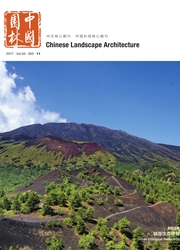

 中文摘要:
中文摘要:
首先分析了中国世界自然遗产、世界自然和文化双遗产现状。我国已成功申报的世界自然遗产多数分布在我国西南部地区、中东部地区和东南部地区,符合的入选标准组合单一,生物多样性类别和地貌景观类别遗产地的数量相对较多,尤其是地貌景观类别世界遗产地中的岩土地貌类型遗产地。未来世界自然遗产的申报,应优先考虑申报数量较少的化石产地类型、陨石冲击类型、水体景观类型、构造地貌类型、冰川地貌类型、海岸地貌类型的世界自然遗产和双遗产。还应尽量使申报地符合的入选标准组合更加多样化,同时,保持世界自然遗产和双遗产的地域平衡性,关注我国西北地区、青藏高原地区、东北北部地区、陕甘黄土高原区、华北与东北南部地区的遗产地。
 英文摘要:
英文摘要:
Most of the World Natural Heritage and World Mixed Heritage in China which are successfully declared are located in the southwestern region, middle-eastern region and southeastern region of China. The combination of the criteria that they meet is single. Among the World Natural Heritage and World Mixed Heritage in China, the Biodiversity Category and Geomorphologic Landscape Category take up quite a big percentage, especially the Geotechnical Geomorphology in Geomorphologic Landscape Category. The heritage of type of Fossil Site, Meteorite Relics, Waterscape, Tectonic Geomorphology, Volcanic Landforms, Glacial Landforms, Coastal Geomorphology should be considered as priorities of the application, which are relatively less in the World Heritage List. It is also suggested that more attention should be paid to the scientific research of heritage to meet more criteria — diverse combinations of criteria. Meanwhile, the balance of geographical distribution cannot be ignored. The heritage in northwest of China, the Tibetan Plateau, the northern part of the northeast region, Shaanxi and Gansu Loess Plateau, and the region between North China and the southern part of the northeast region should be taken into account as well.
 同期刊论文项目
同期刊论文项目
 同项目期刊论文
同项目期刊论文
 期刊信息
期刊信息
